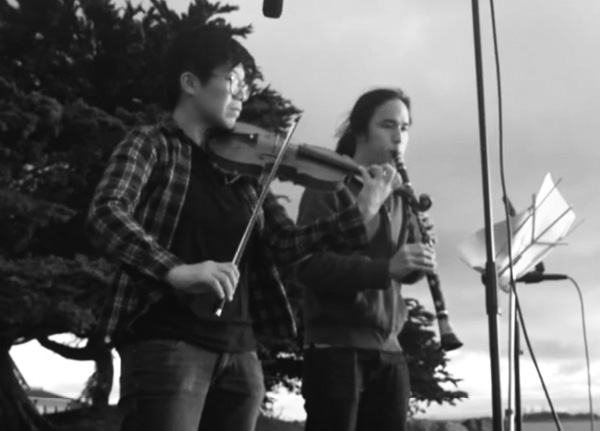
MUSIC FOR BODIES OF WATER
first performed on December 5, 2014
Berkeley Marina, Berkeley, CA
performed twice in 2014
ADAM ADHIYATMA / ADRIA OTTE
Shawn Chua Ming Ren
Oakland, CA / Singapore, China
168207473a168207473a168207473d168207473h168207473i168207473y168207473a168207473t168207473m168207473a168207473@168207473m168207473i168207473l168207473l168207473s168207473.168207473e168207473d168207473u168207473 168207473/168207473 168207473a168207473o168207473t168207473t168207473e168207473@168207473m168207473i168207473l168207473l168207473s168207473.168207473e168207473d168207473u
adamadhiyatma.com
MUSIC FOR BODIES OF WATER
ADAM ADHIYATMA / ADRIA OTTE
While modern air travel has rendered large bodies of water quickly traversable, our histories and ancestries as travelers/immigrants have been shaped by their danger and impassibility (physically, culturally and economically). The experience of difference, alienation and distance by travelers/immigrants is not just a manifestation of abstract cultural separations; it is the physical imprint of bodies of water on our bodies and selves.
We began to develop a collection of scores focused on one’s relationship with bodies of water. Eventually, a meta-score arose from this collection: “Perform music on one side of a body of water. When you get to the other side, perform it again.” Using this directive as a starting point, we decided to establish a series of performances. The first performance, at the Berkeley Marina and Land’s End, consisted of three pieces.
The first piece, “Imaginary Continent #7” by Adam, was a short composed score for violin and clarinet that moves into an improvisation. We performed this piece at the Berkeley Marina and at Land’s End, on opposite sides of the San Francisco Bay. Performers were asked to be present with themselves and their environment before playing, and to take note of how their embodiment of the music changed from one side to the other.
The second piece, “Pacific Resonance” by Adria was an improvisation to be performed specifically while looking out at the Pacific ocean and had simple text instructions: “Look out at the ocean. Try to see the other side. Send a message.” I would spend time by the ocean, imagining what was on the other side and wondering how my thoughts and intentions might be carried by the waves. To prepare for this, we improvised together by the Bay and discussed the possible resonances of performing by the water.
The third piece was a realization of Adam’s “The Spirit Hovered Over the Water #1.” This graphic score addressed the interface between multiple feelings: the warmth and comfort of community and the tranquility/violence of existing by the sea. I (Adam) decided that it was a useful score for embodying the conflicting emotions brought on by large bodies of water.